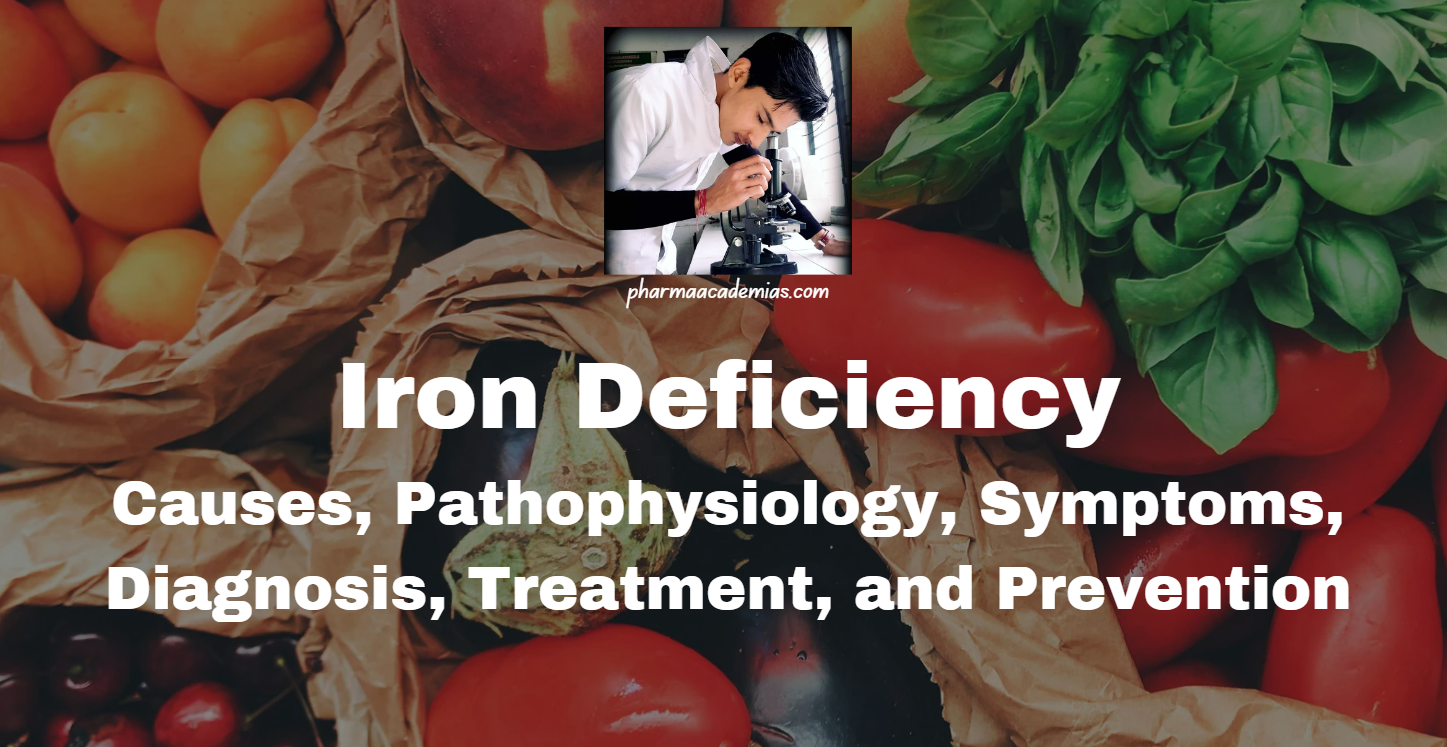Sickle cell anemia is a hereditary blood disorder characterized by the production of abnormal hemoglobin, known as hemoglobin S (HbS). This leads to the deformation of red blood cells into a sickle shape, which causes various complications including pain, anemia, infections, and organ damage. This note explores the genetic basis, …
Megaloblastic Anemia: Causes, Pathophysiology, Symptoms, Diagnosis, Treatment, and Prevention
Megaloblastic anemia is a type of anemia characterized by the presence of abnormally large, immature red blood cells (megaloblasts) in the bone marrow and peripheral blood. This condition primarily results from deficiencies in vitamin B12 (cobalamin) and/or folic acid (vitamin B9). These vitamins are crucial for DNA synthesis and red …
Iron Deficiency: Causes, Pathophysiology, Symptoms, Diagnosis, Treatment, and Prevention
Iron deficiency is one of the most common nutritional disorders worldwide, affecting individuals of all ages. It occurs when the body lacks enough iron to produce adequate levels of hemoglobin, the protein in red blood cells that carries oxygen throughout the body. This condition can lead to iron deficiency anemia, …
Acute and Chronic Renal Failure
Renal failure, also known as kidney failure, occurs when the kidneys lose their ability to filter waste and excess fluids from the blood. This can lead to the accumulation of harmful substances in the body and disrupt the balance of electrolytes. Renal failure can be classified into two main types: …
Asthma: Causes, Pathophysiology, Symptoms, Diagnosis, Treatment, and Prevention
Asthma is a chronic inflammatory disease of the airways characterized by recurrent episodes of wheezing, breathlessness, chest tightness, and coughing, particularly at night or early in the morning. These episodes are associated with widespread but variable airflow obstruction within the lungs that is often reversible either spontaneously or with treatment. …
Ischemic Heart Disease: Angina, Myocardial Infarction, Atherosclerosis, and Arteriosclerosis
Ischemic heart disease (IHD), also known as coronary artery disease (CAD), is a condition characterized by reduced blood flow to the heart muscle due to the narrowing or blockage of coronary arteries. This reduction in blood flow can lead to symptoms such as angina pectoris and, in severe cases, myocardial …
Congestive Heart Failure: Causes, Pathophysiology, Classification, Symptoms, Diagnosis, Treatment, and Prevention
Congestive heart failure (CHF), also known as heart failure, is a chronic progressive condition in which the heart muscle is unable to pump sufficient blood to meet the body’s needs for blood and oxygen. CHF can result from various cardiac disorders and significantly impacts the quality of life and survival. …
Hypertension: Definition, Classification, Cause, Pathophysiology
Hypertension, commonly known as high blood pressure, is a chronic medical condition in which the blood pressure in the arteries is persistently elevated. It is a major risk factor for cardiovascular diseases, including stroke, heart attack, heart failure, and aneurysm, and can also lead to kidney failure, vision loss, and …
Pathophysiology of Atherosclerosis
Atherosclerosis is a progressive inflammatory disease of the large and medium-sized arteries characterized by the accumulation of lipids, inflammatory cells, and fibrous elements, leading to the formation of atherosclerotic plaques. The development of atherosclerosis is a complex process that involves multiple steps: endothelial dysfunction, lipid deposition, inflammatory response, smooth muscle …
Mediators of Inflammation
Inflammation is regulated by a complex network of chemical mediators that orchestrate the response to injury or infection. These mediators originate from various cells and tissues and include vasoactive amines, lipid mediators, cytokines, chemokines, and other small molecules. They play roles in vasodilation, increased vascular permeability, leukocyte recruitment, and other …










